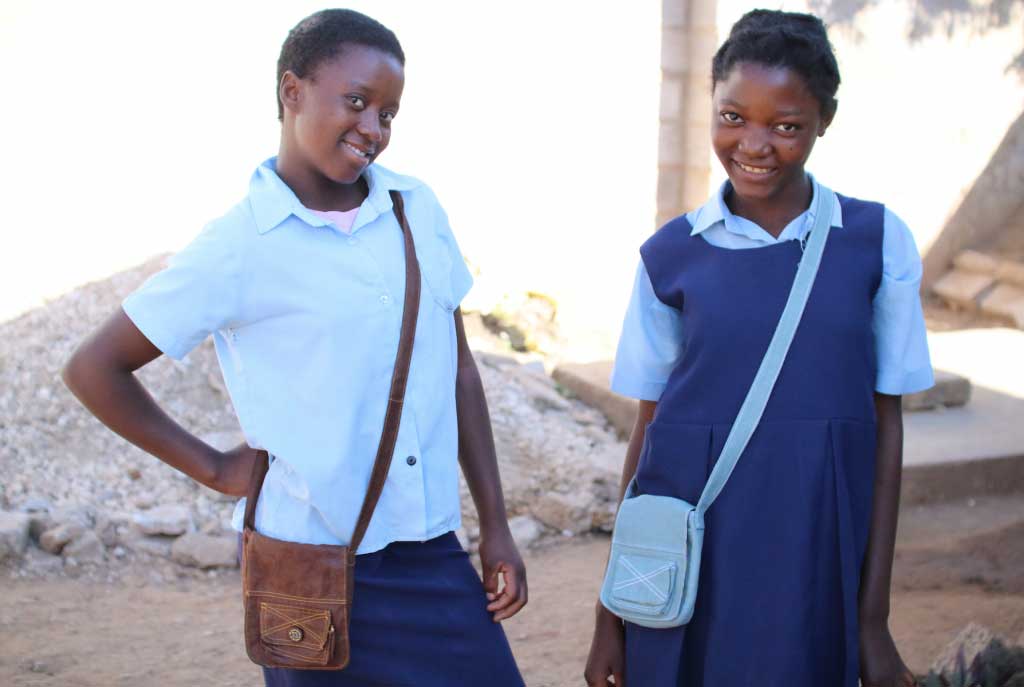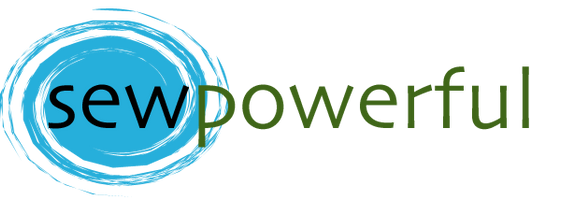
Donating 15,000 Days Of School

We leave for Lusaka tomorrow. While we are there we will help distribute 500 beautiful (handmade) purses. They will contain something most of us in America never think about – elegantly designed re-usable Feminine Hygiene Pads. How the purses and pads were made, sent to Zambia, and (soon to be) placed into the hands of the 500 girls is a story worth sharing.
It started last year when we sat in the hot, over-crowded community school in Ngombe Compound in Lusaka. The school is an oasis for 900 students in a very poor community. 48% of the students are HIV Positive. 70% of them are (double) orphans (meaning they have lost both parents). Some would call it the worst slum in Lusaka. 120,000 people, most under 15 years of age, call it home. We were there to teach sewing skills to 20 seamstresses. They learned to make back-packs, dresses, and shorts for the children of their community. We provide the supplies and funding – they sew as a way to learn, earn, and be a blessing.

Then we heard a shocking statistic…
In East Africa girls miss an average of 6 weeks of school each year because they are on their period, and without access to feminine hygiene product, they simply stay home.
Six weeks of school is a lot to miss – it frequently means the difference between achieving a passing score on the exams required to get into High School (known there as Secondary School) or being told that 8th grade is all the education you’re going to be getting. Time to grow up, (too fast).
Not only are disposable pads (the type used in the west) unavailable financially for these girls, in a community with no garbage service, they would be an ecological nightmare. Elegantly designed and constructed re-usable pads are the best solution. But they don’t have them.
The rest of the trip we wondered what we could do. Back home we asked wise community development practitioners, health care industry professionals, and met with people interested in the issue of MHM (Menstration Hygiene Management). We didn’t even know that term existed until we started to research it more.
Our hearts and minds kept reflecting back on the children and seamstresses we had met. I would wander around the house mumbling, “6 weeks is a lot of school to miss.”

Then we decided to follow the advice of Arthur Ashe. Advice that got drilled into our head by our old friend, (Todd Johnson).
Start Where You Are, Use What You Have, Do What You Can…It Will Be Enough.”
What we had was:
- A clothing design company with world class designers, (people on our team worked at Nordstrom for decades).
- 50,000 customers on our email list that were all seamstresses.
- Friendships with wise people at World Vision in the United States and Zambia.
- 20 seamstresses in Lusaka ready to help (the number of seamstresses has now grown to 40).
So we decided to coordinate a project that would pair a beautiful purse made in the United States (and ultimately around the world) with Re-usable Hygiene Pads made locally in Ngombe by the seamstresses there. As soon as we started to see social media posts like this (see below) we knew we were on to something…

We published a purse pattern and asked our friends and fans to download it, sew a purse (or a few) and send them in to us. 2,250 people downloaded the pattern and we ultimately recieved 503 purses. They came from all over America, Canada, Australia, and Europe. We had created a worldwide movement!
Our amazing friends at World Vision helped us ship the purses to Lusaka. They arrived May 11th, 2015.
You may be wondering at this point – why would we want to have the purses made in America and shipped to Zambia when we have seamstresses in Zambia? The answer is pretty simple. The seamstresses in America (and around the world) have beautiful fabric, time, and energy to be involved. That’s a real asset.
But having the Hygiene Pads made locally in Lusaka makes the most sense because it allows the seamstresses in the community to ensure there is always a supply available for the girls. Plus it gives them steady work, and a way to participate in the program in a meaningful way. Of course, they are also frequently the moms, grandmas, and aunties in the community that can help ensure the girls get what they need in a discrete and respectful way.
To ensure the seamstresses used a high quality design for the Hygiene Pads we asked the Days For Girls team for their advice, (and pattern). They’ve been doing this for a long time and have the technical design and construction method well established.
What’s the Impact?
We were all shocked when we did the math and realized that if 500 girls can go to school instead of missing those days, (the average number of days girls miss has been documented as 6 weeks) – well – that’s a gift of 15,000 days of school, (500 girls, times 6 weeks each, times 5 days in each week). Imagine that!
As you might guess, we’re excited to see the program continue and to see what year two has in store for us, the seamstresses, and the girls of Zambia. Can we do 1,000 purses? 2,000? Time will tell. 1,000 purses would enable 30,000 days of school. 2,000 purses would enable 60,000 days of school.
We’ll be launching the 2015 Sew Powerful Purse program in late summer and collecting purses in October and November. We’d love to have you participate.

